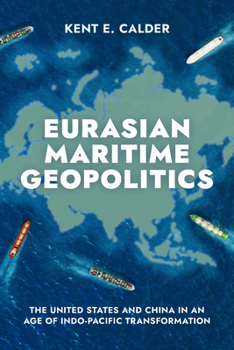Eurasian Maritime Geopolitics: The United States and China in an Age of Indo-Pacific Transformation
Reviews the strategic geography of the sea lanes from Northeast Asia through the Indian Ocean to Europe since the Middle Ages, noting how changing technology and economic patterns have transformed the global significance of those passage ways, especially since the end of the Cold War. Begins with a survey of the geography itself, and of how rimland nations such as India, Indonesia, and the Gulf configure it. A history of the changing economic role of the sea lanes complements that geographic assessment, chronicling how maritime flows of energy, commodities and information have steadily increased. Focuses on the contrasting roles of the United States--as Guardian at the Gate-- and China--as Challenger-- in these strategic sea lanes, and the contrasting leverage which each side enjoys. Concludes with an assessment of shadows and uncertainties relating to the Eurasian sea lanes in the post-Ukraine world, and to policies that can sensibly be taken to deal with looming future policy challenges.





